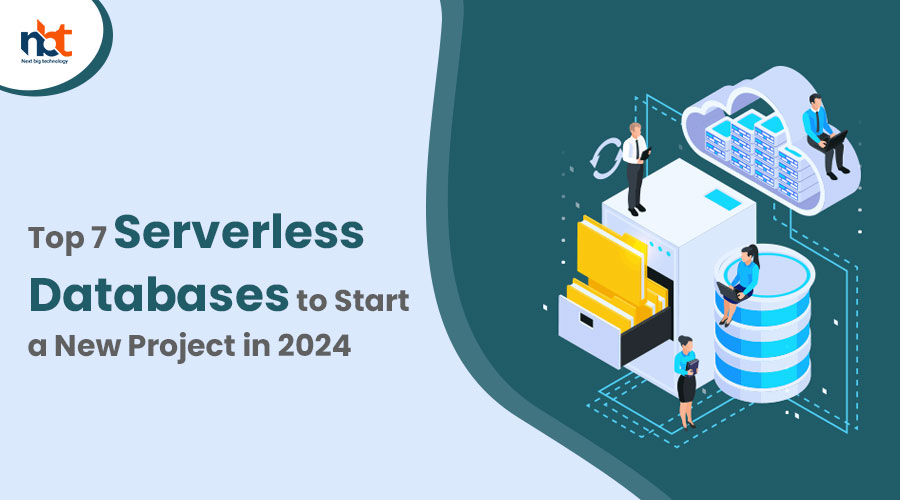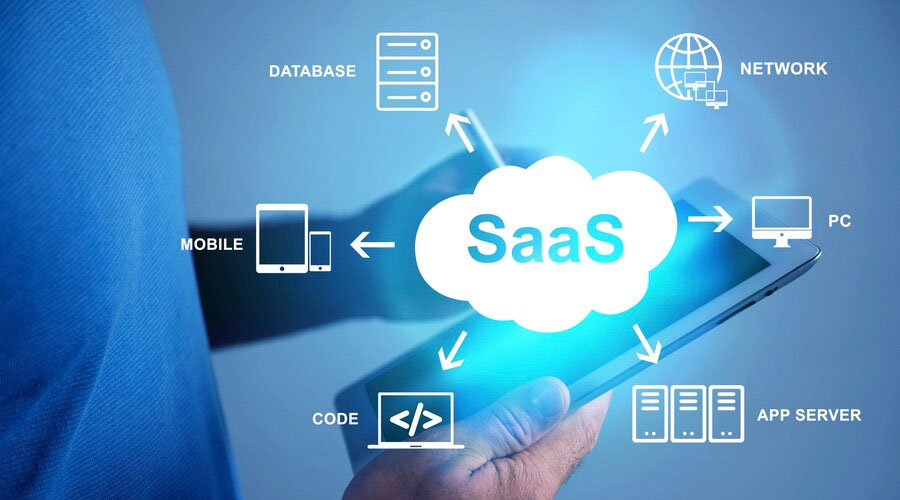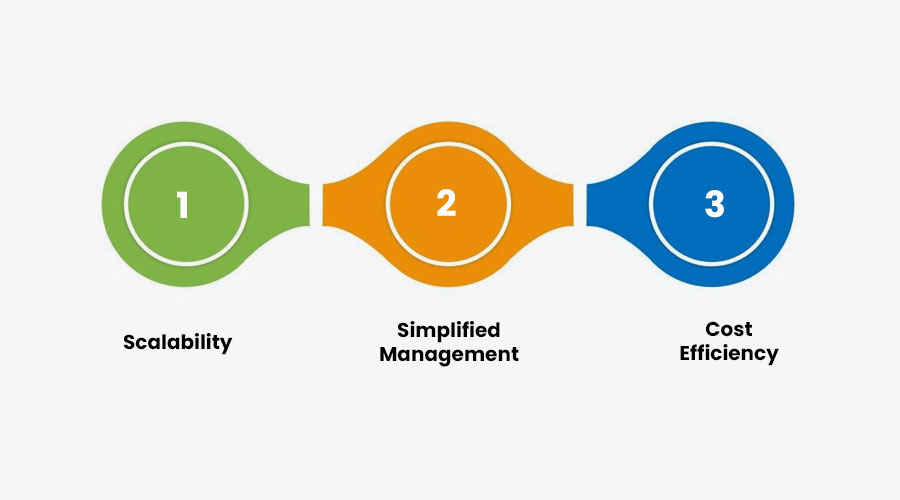Table of Contents
Introduction to Serverless Databases
In the ever-evolving landscape of cloud computing, serverless technologies have emerged as a game-changer, offering unparalleled scalability, cost-efficiency, and flexibility. Among these innovations, serverless databases stand out as a transformative solution for modern application development. In this comprehensive guide, we’ll delve into the fundamentals of serverless databases, exploring what they are, how they work, and why they’re revolutionizing the way we approach data management.
What are Serverless Databases?
Serverless databases, also known as database as a service (DBaaS), are cloud-based database solutions that eliminate the need for users to provision, manage, and scale infrastructure. Unlike traditional databases that require users to maintain servers and manage resources manually, serverless databases abstract away the underlying infrastructure complexities, allowing developers to focus solely on building and optimizing their applications.
How Do They Work?
At the heart of serverless databases is the concept of “pay-per-use” pricing model, where users are charged based on the resources consumed rather than a flat rate. This model offers significant cost savings, especially for applications with unpredictable workloads, as users only pay for the resources they actually use.
Under the hood, serverless databases leverage auto-scaling capabilities to automatically adjust compute and storage resources based on demand. This elastic scaling ensures optimal performance and availability without the need for manual intervention. Additionally, serverless databases typically offer built-in features such as automated backups, data encryption, and multi-region replication for enhanced security and reliability.
Key Benefits of Serverless Databases
- Scalability: Serverless databases can seamlessly scale up or down to accommodate fluctuations in workload, ensuring consistent performance and minimizing infrastructure costs.
- Cost-Efficiency: With pay-per-use pricing, users only pay for the resources consumed, eliminating the need for upfront investment in hardware and infrastructure maintenance.
- Simplicity: By abstracting away infrastructure management tasks, serverless databases simplify development and deployment processes, allowing teams to focus on innovation and product delivery.
- High Availability: Serverless databases offer built-in redundancy and failover mechanisms, ensuring continuous availability and data durability across multiple geographic regions.
- Automatic Scaling: With auto-scaling capabilities, serverless databases can handle sudden spikes in traffic without manual intervention, providing a seamless experience for end-users.
Popular Serverless Database Providers
- Amazon Aurora Serverless: A fully managed, auto-scaling relational database service offered by Amazon Web Services (AWS), designed for applications with unpredictable workloads.
- Google Cloud Firestore: A serverless, NoSQL document database provided by Google Cloud Platform (GCP), offering real-time synchronization and offline support for mobile and web applications.
- Microsoft Azure Cosmos DB: A globally distributed, multi-model database service offered by Microsoft Azure, designed for building highly responsive and scalable applications.
- Firebase Realtime Database: A serverless, NoSQL cloud database provided by Google Firebase, offering real-time data synchronization and seamless integration with Firebase ecosystem services.
Benefits of Using Serverless Databases for New Projects
In the ever-evolving landscape of technology, the concept of serverless computing has emerged as a game-changer, revolutionizing the way businesses approach software development. Particularly, when it comes to database management for new projects, the adoption of serverless databases has gained significant traction, offering a plethora of benefits that traditional setups often struggle to match. Let’s delve into the advantages that make serverless databases an indispensable asset for modern-day projects.
Enhanced Scalability and Flexibility: One of the standout features of serverless databases lies in their unparalleled scalability and flexibility. Unlike conventional databases where capacity planning and provisioning can be daunting tasks, serverless databases automatically scale up or down in response to workload demands. This elasticity ensures that your database resources align perfectly with the needs of your project, eliminating the risk of over-provisioning or under-provisioning. Consequently, you can effortlessly handle sudden spikes in traffic without worrying about performance degradation or downtime, thereby enhancing the overall user experience.
Cost Efficiency and Pay-as-You-Go Model: Cost management is a critical aspect of any project, especially for startups and small businesses. Serverless databases offer a cost-effective solution by adopting a pay-as-you-go pricing model. With traditional databases, you’re often required to invest in infrastructure upfront, regardless of actual usage. In contrast, serverless databases charge you based on the resources consumed, ensuring that you only pay for what you use. This cost-efficient approach not only reduces your operational expenses but also allows you to allocate financial resources more strategically, thereby maximizing your ROI.
Automated Maintenance and Administration: Maintaining and administering databases can be a time-consuming and resource-intensive endeavor. Serverless databases alleviate this burden by offloading the responsibility of infrastructure management to the service provider. From software patching and backups to security updates and performance optimization, the operational overhead associated with database maintenance is significantly reduced. This allows your development team to focus their efforts on building and enhancing the core functionality of your project, rather than getting bogged down by administrative tasks.
Seamless Integration with Serverless Architecture: In today’s era of microservices and serverless computing, integration plays a pivotal role in ensuring the smooth operation of your applications. Serverless databases seamlessly integrate with serverless architectures, offering a cohesive ecosystem where each component complements the other. Whether you’re building a web application, a mobile app, or a complex enterprise system, the ability to leverage serverless databases within a serverless architecture simplifies development, accelerates deployment, and promotes interoperability across different services and functions.
Enhanced Security and Compliance: Data security and compliance are non-negotiable aspects, especially in industries dealing with sensitive information such as healthcare, finance, and e-commerce. Serverless databases employ robust security measures, including encryption at rest and in transit, fine-grained access controls, and built-in compliance certifications, ensuring that your data remains protected against unauthorized access and breaches. By leveraging the security features offered by serverless databases, you can instill trust and confidence among your users while adhering to regulatory requirements and industry standards.
Considerations When Choosing a Serverless Database
In today’s fast-paced digital landscape, the demand for scalable, flexible, and cost-effective database solutions has never been higher. As businesses strive to innovate and stay competitive, the adoption of serverless architectures has emerged as a game-changer. Serverless databases, in particular, offer a compelling proposition by abstracting infrastructure management and allowing developers to focus solely on building applications. However, choosing the right serverless database solution requires careful consideration of various factors. In this article, we delve into the key considerations to keep in mind when selecting a serverless database.
- Scalability and Performance: One of the primary benefits of serverless databases is their ability to automatically scale in response to workload demands. When evaluating a serverless database solution, consider its scalability capabilities. Ensure that it can seamlessly handle sudden spikes in traffic without compromising performance. Look for features such as auto-scaling and load balancing, which can optimize resource utilization and ensure consistent performance under varying workloads.
- Data Model and Querying Capabilities: Different applications have unique data requirements, ranging from simple key-value stores to complex relational structures. Assess whether the serverless database supports your preferred data model and querying language. Consider factors such as schema flexibility, support for secondary indexes, and compatibility with SQL or NoSQL interfaces. Choose a database that aligns with your application’s data modeling and querying needs to facilitate development and minimize migration efforts.
- Security and Compliance: Data security is paramount in any database deployment, and serverless environments are no exception. Evaluate the security features offered by the serverless database, including encryption at rest and in transit, access control mechanisms, and compliance certifications. Ensure that the database solution adheres to industry-standard security practices and regulatory requirements applicable to your business domain.
- Integration and Ecosystem: An ecosystem of compatible services and tools can significantly enhance the capabilities of a serverless database. Consider the integration options available for connecting the database with other cloud services, development frameworks, and third-party tools. Look for support for popular programming languages, SDKs, and APIs to streamline development and integration tasks. Additionally, assess the availability of monitoring, logging, and debugging tools to facilitate operational management and troubleshooting.
- Cost and Billing Model: While serverless databases offer cost advantages through pay-as-you-go pricing models, it’s essential to understand the pricing structure and potential cost implications. Evaluate the pricing granularity, including factors such as data storage, read and write operations, and network egress. Consider projected usage patterns and growth scenarios to estimate long-term costs accurately. Look for cost optimization features such as tiered pricing, reserved capacity options, and cost monitoring dashboards to control expenses effectively.
- Vendor Lock-In and Portability: Vendor lock-in can be a concern when adopting any cloud-based service, including serverless databases. Assess the portability of your data and applications across different cloud providers or deployment environments. Look for standardized APIs and data formats that facilitate seamless migration and interoperability. Consider leveraging multi-cloud or hybrid cloud strategies to mitigate the risks associated with vendor lock-in and maintain flexibility in your infrastructure choices.
- Reliability and Availability: Dependable performance and high availability are critical requirements for mission-critical applications. Evaluate the service-level agreements (SLAs) provided by the serverless database vendor, including guarantees for uptime, data durability, and disaster recovery. Look for built-in features such as automated backups, replication across multiple availability zones, and multi-region deployment options to enhance reliability and ensure business continuity.
DynamoDB: Amazon’s Scalable and Fully Managed NoSQL Database
In today’s digital age, where data is the lifeblood of businesses, having a robust and scalable database solution is paramount. Enter DynamoDB, Amazon’s powerhouse offering in the realm of NoSQL databases. Engineered to handle massive workloads with lightning speed and unparalleled reliability, DynamoDB has emerged as a go-to choice for organizations seeking to scale their operations seamlessly.
Understanding DynamoDB: DynamoDB is a fully managed NoSQL database service provided by Amazon Web Services (AWS). It is designed to deliver single-digit millisecond performance at any scale, making it ideal for applications that require low-latency data access. Unlike traditional SQL databases, DynamoDB is schema-less, allowing for flexible data modeling and storage of unstructured data.
Scalability at Its Core: One of the standout features of DynamoDB is its effortless scalability. With built-in auto-scaling capabilities, DynamoDB can adapt to fluctuating workloads in real-time, ensuring consistent performance without the need for manual intervention. Whether you’re dealing with a sudden surge in traffic or planning for long-term growth, DynamoDB can effortlessly handle the demands of your application.
Fully Managed Convenience: Managing database infrastructure can be a daunting task, requiring significant time and resources. DynamoDB eliminates this overhead by offering a fully managed service. AWS takes care of provisioning, monitoring, and maintenance, allowing developers to focus on building applications rather than managing infrastructure. This hands-off approach not only reduces operational complexity but also ensures high availability and durability of data.
Flexible Data Model: DynamoDB’s flexible data model empowers developers to store and retrieve data in a way that best suits their application’s needs. Whether it’s simple key-value pairs or complex nested structures, DynamoDB can handle it all. Additionally, DynamoDB supports secondary indexes, enabling efficient querying of data based on various attributes without compromising performance.
Seamless Integration with AWS Ecosystem: As part of the AWS ecosystem, DynamoDB seamlessly integrates with other AWS services, providing developers with a comprehensive toolkit for building scalable and resilient applications. Whether it’s integrating with Lambda functions for serverless computing or leveraging Amazon S3 for storing large objects, DynamoDB plays well with other AWS services, enabling developers to architect sophisticated solutions with ease.
Cost-Effective Pricing Model: Cost is always a consideration when choosing a database solution. DynamoDB offers a flexible pricing model that aligns with usage, allowing organizations to pay only for the resources they consume. With options for on-demand and provisioned capacity, DynamoDB provides cost-effective solutions for a wide range of use cases, from small-scale applications to enterprise-grade deployments.
Firestore: Google’s Serverless NoSQL Database for Real-Time Applications
In the fast-paced world of technology, where real-time data processing and seamless scalability are paramount, Google’s Firestore emerges as a game-changer. A part of the Firebase platform, Firestore is a serverless NoSQL database that empowers developers to build responsive, data-driven applications with unparalleled efficiency and ease.
Understanding Firestore:
At its core, Firestore is designed to handle structured data and offers seamless synchronization across clients and server. Leveraging Google’s robust infrastructure, it ensures real-time data synchronization, enabling applications to react instantly to changes without the need for complex backend setups.
Features that Set Firestore Apart:
- Real-Time Updates: One of Firestore’s standout features is its real-time synchronization capability. Any changes made to the database are instantly propagated to all connected clients, ensuring a consistent and up-to-date user experience.
- Scalability: Firestore scales effortlessly to accommodate growing data needs. Whether you’re serving a handful of users or millions, Firestore’s flexible scaling capabilities ensure consistent performance without the hassle of managing infrastructure.
- Offline Support: With Firestore, applications remain functional even when offline. It seamlessly caches data on the client device, allowing users to interact with the app uninterrupted, and syncs changes once connectivity is restored.
- Security Rules: Firestore provides robust security features, allowing developers to define granular access controls through security rules. This ensures that data remains protected from unauthorized access or tampering.
- Rich Querying: Developers can perform complex queries on Firestore with ease, thanks to its powerful querying capabilities. Whether it’s filtering, sorting, or aggregating data, Firestore provides the tools to retrieve the required information efficiently.
Use Cases of Firestore:
- Real-Time Collaboration Apps: Applications requiring real-time collaboration, such as messaging platforms or collaborative editing tools, benefit immensely from Firestore’s instant synchronization and scalability.
- Live Data Dashboards: For businesses monitoring real-time metrics or analytics, Firestore enables the creation of dynamic dashboards that update in real-time, providing actionable insights at a glance.
- Gaming Applications: Multiplayer games rely on real-time data updates to provide a seamless gaming experience. Firestore’s real-time synchronization and offline support make it an ideal choice for building multiplayer gaming platforms.
- IoT (Internet of Things) Devices: IoT devices generate vast amounts of data that require real-time processing and analysis. Firestore’s scalability and real-time capabilities make it well-suited for managing IoT data streams efficiently.
Azure Cosmos DB: Microsoft’s Globally Distributed, Multi-Model Database Service
In today’s digital age, where data reigns supreme, the need for robust, scalable, and globally distributed database solutions has never been more pronounced. Enter Azure Cosmos DB, Microsoft’s revolutionary offering that is redefining the landscape of database services. With its unparalleled capabilities in global distribution, multi-model support, and seamless scalability, Azure Cosmos DB is empowering businesses worldwide to unlock new frontiers in data management and application development.
Understanding Azure Cosmos DB: Azure Cosmos DB stands out in the realm of database services for its unique architecture designed to meet the demands of modern applications requiring global distribution, high availability, and low latency at scale. Built from the ground up as a globally distributed, multi-model database service, Azure Cosmos DB caters to a diverse range of use cases, from mission-critical enterprise applications to real-time analytics and IoT solutions.
Global Distribution at Your Fingertips: One of the key features that sets Azure Cosmos DB apart is its ability to seamlessly replicate data across multiple Azure regions worldwide, ensuring high availability and low-latency access for users across the globe. Leveraging Microsoft’s extensive global network infrastructure, Azure Cosmos DB enables businesses to deploy their applications closer to their users, resulting in faster response times and improved user experiences.
Multi-Model Flexibility: Azure Cosmos DB supports multiple data models, including document, key-value, graph, column-family, and table, providing developers with the flexibility to choose the most appropriate model for their applications. Whether it’s storing semi-structured JSON documents, graph data for social networks, or key-value pairs for caching, Azure Cosmos DB offers a unified and intuitive programming model that streamlines development and reduces time to market.
Unmatched Scalability and Performance: With its innovative architecture and elastic scaling capabilities, Azure Cosmos DB can effortlessly handle the most demanding workloads, from a few gigabytes to petabytes of data, all with predictable low-latency performance. By automatically scaling throughput and storage in response to workload changes, Azure Cosmos DB eliminates the need for manual intervention, allowing businesses to focus on innovation rather than infrastructure management.
Built-In Enterprise-Grade Security and Compliance: Security is paramount in today’s data-driven world, and Azure Cosmos DB doesn’t disappoint. With built-in support for encryption at rest and in transit, role-based access control, and compliance certifications such as GDPR, HIPAA, and SOC, Azure Cosmos DB provides enterprises with the peace of mind they need to trust their most sensitive data to the cloud.
Serverless Aurora: Amazon’s Relational Database Service for MySQL and PostgreSQL
In the realm of cloud computing, Amazon Web Services (AWS) has continually raised the bar with innovative solutions tailored to meet evolving business needs. One such groundbreaking offering is Serverless Aurora, a game-changer in the world of relational databases, specifically designed for MySQL and PostgreSQL users.
Understanding Serverless Aurora
Serverless Aurora redefines the traditional approach to database management by eliminating the hassle of database provisioning, scaling, and maintenance. As the name suggests, it operates in a serverless fashion, allowing developers to focus solely on application development without worrying about infrastructure management.
How Does It Work?
At its core, Serverless Aurora utilizes a pay-per-use model, where you’re charged based on the resources consumed rather than provisioned capacity. This flexible billing structure ensures cost efficiency, especially for workloads with unpredictable traffic patterns.
Under the hood, Aurora automatically scales compute and storage capacity in response to application demands, seamlessly handling fluctuations in workload without any manual intervention. This dynamic scaling capability ensures optimal performance and availability, even during peak traffic periods.
Key Features and Benefits
- Automated Scalability: Serverless Aurora scales both compute and storage resources transparently, ensuring consistent performance under varying workloads.
- High Availability: Leveraging AWS’s robust infrastructure, Serverless Aurora guarantees high availability with built-in replication across multiple availability zones.
- Data Durability: Your data is safeguarded with continuous backups to Amazon S3 and automatic failover, minimizing the risk of data loss.
- Multi-Region Replication: For enhanced disaster recovery and global applications, Serverless Aurora supports cross-region replication, ensuring data redundancy and geographic resilience.
- Compatible with MySQL and PostgreSQL: Whether you’re accustomed to MySQL or PostgreSQL, Serverless Aurora provides full compatibility with existing tools, applications, and drivers.
- Seamless Integration with AWS Ecosystem: Integrate Serverless Aurora with other AWS services such as Lambda, API Gateway, and Amazon S3 to build powerful, serverless architectures.
Use Cases
Serverless Aurora caters to a wide array of use cases across various industries:
- E-commerce: Handle peak shopping seasons effortlessly with elastic scalability.
- Gaming: Support millions of concurrent users with consistent performance.
- Fintech: Ensure compliance and data security with built-in encryption and auditing.
- Healthcare: Safeguard sensitive patient data with multi-layered security features.
Getting Started
Getting started with Serverless Aurora is a breeze:
- Create a Database: Use the AWS Management Console or CLI to create a new Serverless Aurora database cluster.
- Configure Security: Define access controls and security policies to protect your data.
- Connect Your Application: Utilize standard database drivers and connection strings to integrate Serverless Aurora with your applications.
- Monitor Performance: Keep an eye on database performance and usage metrics using AWS CloudWatch and Aurora Console.
Firebase Realtime Database: Google’s NoSQL Cloud Database for Building Real-Time Applications
In the ever-evolving landscape of app development, the demand for real-time capabilities has become paramount. Users expect seamless interactions, instantaneous updates, and synchronized data across devices. To meet these expectations, developers need robust solutions, and Firebase Realtime Database emerges as a top contender, offering Google’s NoSQL cloud database tailored for building dynamic, real-time applications.
Understanding Firebase Realtime Database
Firebase Realtime Database is a cloud-hosted NoSQL database that stores data in JSON format and syncs it across all connected clients in real-time. It’s part of the broader Firebase platform, which provides a suite of tools and services to aid app development, including authentication, analytics, hosting, and more.
At its core, Firebase Realtime Database operates on the principle of data synchronization. When data in the database changes, all connected clients receive updates in real-time, enabling seamless collaboration and ensuring that users see the latest information instantaneously.
Key Features and Benefits
- Real-time Synchronization: Changes made to the database are immediately propagated to all connected clients, enabling real-time updates without the need for manual refreshes.
- Offline Support: Firebase Realtime Database offers robust offline support, allowing apps to remain functional even when the device is offline. Once the connection is restored, the database syncs the local changes with the cloud.
- Scalability: As a cloud-hosted solution, Firebase Realtime Database automatically scales to accommodate changes in demand, ensuring optimal performance regardless of the application’s size or user base.
- Security Rules: Firebase provides flexible and powerful security rules that allow developers to define who has access to specific data and under what conditions, ensuring data integrity and user privacy.
- Integration with Other Firebase Services: Firebase Realtime Database seamlessly integrates with other Firebase services, such as Firebase Authentication, Cloud Functions, and Firebase Hosting, providing a comprehensive development ecosystem.
Use Cases
- Collaborative Apps: Applications that require real-time collaboration, such as collaborative document editing tools, chat applications, or multiplayer games, can leverage Firebase Realtime Database to synchronize data across users in real-time.
- Real-Time Analytics: Businesses can use Firebase Realtime Database to track and analyze user interactions with their apps in real-time, enabling them to make data-driven decisions and personalize user experiences.
- IoT Applications: Internet of Things (IoT) devices often generate a vast amount of data that needs to be processed and analyzed in real-time. Firebase Realtime Database provides a scalable and efficient solution for storing and synchronizing IoT data.
- Live Updates: Apps that rely on live updates, such as news apps, social media platforms, or sports scores applications, can benefit from Firebase Realtime Database’s real-time synchronization capabilities to deliver up-to-date information to users.
Getting Started with Firebase Realtime Database
Getting started with Firebase Realtime Database is straightforward. Developers can integrate it into their apps using Firebase SDKs available for various platforms, including iOS, Android, and web. The Firebase console provides a user-friendly interface for managing databases, setting security rules, and monitoring usage.
To begin, developers need to create a Firebase project, add their app to the project, and configure Firebase SDKs. Once integrated, they can start storing and syncing data in real-time, leveraging Firebase’s powerful features to build dynamic and engaging applications.
Serverless SQL: Exploring Options for Running SQL Queries in a Serverless Environment
In the ever-evolving landscape of cloud computing, the advent of serverless architecture has revolutionized how applications are developed, deployed, and scaled. Among the myriad of functionalities offered by serverless platforms, the ability to execute SQL queries in a serverless environment stands out as a promising avenue for data-driven organizations seeking agility and cost-efficiency. In this exploration, we delve into the realm of Serverless SQL, unraveling its options, benefits, and considerations.
Understanding Serverless SQL
At its core, Serverless SQL enables users to run SQL queries without managing the underlying infrastructure. It liberates developers from the burden of provisioning, scaling, and maintaining servers, allowing them to focus solely on crafting efficient SQL queries to extract insights from data. Leveraging the pay-per-execution model, Serverless SQL offers a cost-effective solution wherein users are billed only for the resources consumed during query execution.
Options for Running Serverless SQL Queries
1. Cloud Provider Services: Leading cloud providers, including AWS, Azure, and Google Cloud, offer native serverless SQL services tailored to their respective ecosystems. AWS Athena, Azure Synapse Analytics, and Google BigQuery are prominent examples, each providing a platform for ad-hoc querying, analytics, and data warehousing without the need for infrastructure management. These services seamlessly integrate with other cloud offerings, facilitating data ingestion, transformation, and visualization pipelines.
2. Third-Party Solutions: In addition to native offerings, a burgeoning ecosystem of third-party solutions caters to specialized use cases and preferences. Products like FaunaDB, QuestDB, and Rockset extend the capabilities of Serverless SQL with features such as real-time analytics, geospatial querying, and ACID-compliant transactions. These solutions offer flexibility and customization options, enabling users to tailor their serverless SQL workflows to specific requirements.
Benefits of Serverless SQL
1. Scalability: Serverless SQL platforms automatically scale resources in response to workload fluctuations, ensuring consistent performance under varying query loads. This elastic scalability eliminates the need for capacity planning and mitigates the risk of overprovisioning or underutilization, optimizing resource utilization and cost-efficiency.
2. Simplified Management: By abstracting infrastructure management, Serverless SQL simplifies operational overhead, allowing organizations to allocate resources towards innovation rather than maintenance. With built-in monitoring, logging, and security features, users can focus on query optimization and data analysis without the distraction of infrastructure concerns.
3. Cost Efficiency: The pay-per-execution pricing model of Serverless SQL minimizes costs by charging users only for the compute resources consumed during query execution. This granular billing approach aligns expenses with actual usage, making Serverless SQL an attractive option for organizations seeking to optimize their cloud expenditure without compromising on performance or scalability.
Considerations and Best Practices
While Serverless SQL offers compelling benefits, it’s essential to consider several factors when adopting this paradigm:
- Query Optimization: Design efficient SQL queries to minimize execution time and resource utilization.
- Data Partitioning: Utilize partitioning strategies to optimize query performance and reduce costs, particularly for large datasets.
- Security and Compliance: Implement robust security measures to protect sensitive data and ensure compliance with regulatory requirements.
- Vendor Lock-in: Evaluate the portability and interoperability of Serverless SQL solutions to mitigate the risk of vendor lock-in and facilitate future migration efforts.
Top Serverless Databases Companies
In the fast-paced world of digital transformation, businesses are increasingly turning to serverless architectures to streamline operations and optimize resource utilization. Among the pivotal components of this paradigm shift are serverless databases, which offer scalable, cost-effective solutions for storing and managing data without the overhead of provisioning or managing servers. Let’s delve into the realm of serverless databases and explore the top companies pioneering this transformative technology.
-
-
Next Big Technology:

Focus Area
- Mobile App Development
- App Designing (UI/UX)
- Software Development
- Web Development
- AR & VR Development
- Big Data & BI
- Cloud Computing Services
- DevOps
- E-commerce Development
Industries Focus
- Art, Entertainment & Music
- Business Services
- Consumer Products
- Designing
- Education
- Financial & Payments
- Gaming
- Government
- Healthcare & Medical
- Hospitality
- Information Technology
- Legal & Compliance
- Manufacturing
- Media
-
- AWS DynamoDB: As a fully managed NoSQL database service, DynamoDB from Amazon Web Services (AWS) is designed to deliver single-digit millisecond performance at any scale. With built-in security, backup and restore capabilities, and seamless integration with AWS Lambda, DynamoDB enables developers to build highly responsive and reliable applications. Its pay-per-request pricing model ensures cost efficiency, making it a top choice for serverless database solutions.
- Azure Cosmos DB: Microsoft’s globally distributed, multi-model database service, Azure Cosmos DB, is built to elastically and independently scale throughput and storage across any number of Azure regions. Offering support for NoSQL data models, including document, key-value, graph, and column-family, Cosmos DB provides unparalleled flexibility for diverse application needs. Its comprehensive SLAs for performance, availability, and latency make it a compelling choice for mission-critical workloads.
- FaunaDB: Positioned as the data API for modern applications, FaunaDB combines the flexibility of NoSQL with the transactional consistency of relational databases. With its globally distributed architecture and native support for GraphQL, FaunaDB empowers developers to build scalable, serverless applications with ease. Its strong consistency, ACID transactions, and fine-grained access control make it suitable for a wide range of use cases, from real-time applications to complex analytics.
- AstraDB by DataStax: AstraDB is a serverless database built on Apache Cassandra™, offering a fully managed and multi-cloud database-as-a-service (DBaaS) solution. With its pay-as-you-go pricing model and automatic scaling, AstraDB simplifies database management for developers, allowing them to focus on building applications rather than managing infrastructure. Its compatibility with Cassandra Query Language (CQL) and support for JSON data make it a versatile choice for modern cloud-native applications.
- MongoDB Atlas: MongoDB Atlas is a fully managed cloud database service built by the team behind the popular MongoDB database. With its serverless instances, developers can deploy, manage, and scale MongoDB databases with ease, without worrying about infrastructure management. Atlas offers comprehensive security features, including encryption, network isolation, and role-based access control, making it a trusted choice for organizations seeking to safeguard their data in the cloud.
FAQs On Serverless Databases
In recent years, serverless computing has transformed the way we architect and deploy applications, offering scalability, flexibility, and cost-efficiency. One of the key components of this paradigm shift is serverless databases, which have gained significant traction among developers and businesses alike. However, as with any emerging technology, there are bound to be questions and uncertainties. In this article, we’ll delve into some frequently asked questions (FAQs) about serverless databases to provide clarity and insights.
1. What exactly is a serverless database? A serverless database, in essence, eliminates the need for provisioning, scaling, and managing servers typically associated with traditional databases. Instead, it allows developers to focus solely on building and optimizing their applications without worrying about infrastructure management. Serverless databases automatically handle tasks such as provisioning resources, scaling capacity, and ensuring high availability, thereby enabling seamless scalability and cost-effectiveness.
2. How does a serverless database differ from a traditional database? Unlike traditional databases, which require upfront provisioning of resources based on anticipated workload, serverless databases operate on a pay-as-you-go model. This means that you only pay for the resources you consume, making them highly cost-efficient, especially for applications with unpredictable or variable workloads. Additionally, serverless databases automatically handle tasks such as replication, backups, and maintenance, reducing operational overhead for developers.
3. What are the benefits of using a serverless database? One of the primary benefits of using a serverless database is its scalability. With traditional databases, scaling often involves manual intervention and downtime. In contrast, serverless databases automatically scale up or down based on demand, ensuring optimal performance without any disruption to the application. Moreover, serverless databases offer inherent fault tolerance and high availability, with built-in replication and failover mechanisms, thereby minimizing the risk of data loss or downtime.
4. Are there any limitations or drawbacks to using a serverless database? While serverless databases offer numerous benefits, they may not be suitable for every use case. One limitation is the potential for cold start latency, where there may be a delay in processing requests if the database instance needs to be spun up. Additionally, serverless databases may have restrictions on features or configurations compared to their traditional counterparts. It’s essential to evaluate your application’s requirements carefully and consider factors such as performance, latency, and scalability before opting for a serverless database solution.
5. Which use cases are ideal for serverless databases? Serverless databases are well-suited for a variety of use cases, particularly those with sporadic or unpredictable workloads. Examples include web applications, mobile apps, IoT (Internet of Things) devices, and microservices architectures. Additionally, serverless databases are beneficial for prototyping, development, and testing environments, where rapid iteration and scalability are essential. However, for applications with consistent high traffic or specialized requirements, such as real-time analytics or complex transactions, a traditional database may be more appropriate.
6. What are some popular serverless database options available? There are several serverless database offerings available in the market, each with its unique features and capabilities. Some popular options include Amazon DynamoDB, Google Cloud Firestore, Microsoft Azure Cosmos DB, and FaunaDB. These platforms provide managed database services with serverless architecture, allowing developers to focus on building their applications while offloading the operational complexity to the cloud provider.
Thanks for reading our post “Top 7 Serverless Databases to Start a New Project in 2024”. Please connect with us to learn more about Best Serverless Databases .






















